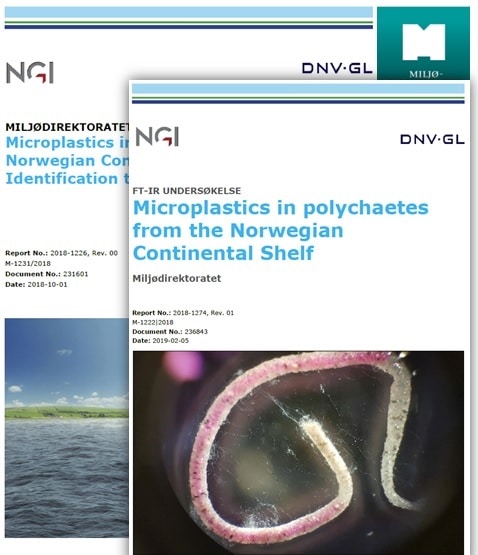
Authorities release reports highlighting the severity of the problem with microplastics
Today, common flocculants in the Oil & Gas Industry are classified RED, which means they are non-biodegradable or toxic. At the Norwegian Continental Shelf more than 700 tons are used every year offshore for the treatment of produced water. An estimated 20-30% of which may be discharged at sea as excess.
This is polyacrylamide based polymer products which accumulates (as microplastic) in the marine environment (Ref. DNV GL-Report No. 2018-1226, Rev.00 M-1231/2018) and they are now considered likely to propagate up into the food chain (Ref. DNV GL-Report No. 2018-1274, Rev.01 M-1222/2018). Substituting to a bio-degradable equal or more efficient product will have a significant environmental impact by eliminating the annual discharge of red chemicals.
Extractions from reports:
* Polyacrylamides (density 1.11 kg/L) – was the most frequent plastic particle in Reg-01, Reg-07, Eko-21, second most frequent in Eko-14, and was found in several other samples. Polyacrylamides are commonly used as a flocculant in water and waste water treatment, as a soil conditioner, and as a viscosity modifier and friction reducer in both enhanced oil recovery and high-volume hydraulic fracturing. Polyacrylamides are considered a water-soluble polymer, and thus their presence in sediments may be due to i) large particle size, preventing dissolution or ii) polyacrylamide coated clays/composites or other flocs with a high density. It is noted that many of the findings, such as on regional stations and in the Barents Sea, are far away from oil & gas installations, potentially indicating long range transport.
** Microplastics were identified in all polychaete samples analyzed, with an overall mean concentration of 5 ± 4 items/individual, corresponding to 1628 ± 1660 items/g wet weight. The results highlight the widespread distribution of microplastics in benthic fauna of the NCS, and that microplastics can be transferred to polychaetes, where they may accumulate in concentrations compared to the surrounding sediments. This provides a direct route for microplastics to transfer further up in the benthic food chain. Further research is needed to assess potential risks or ecotoxic effects of the concentration levels presented in this study.

